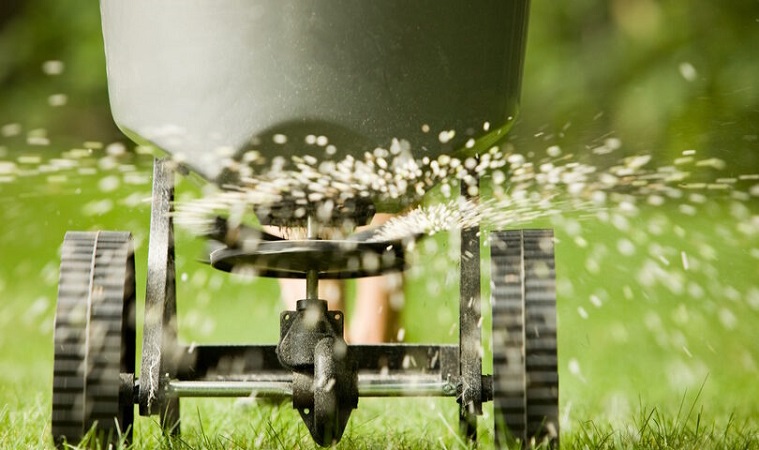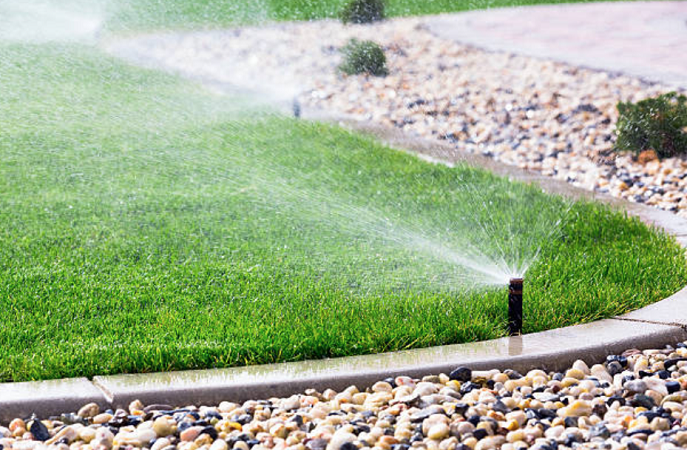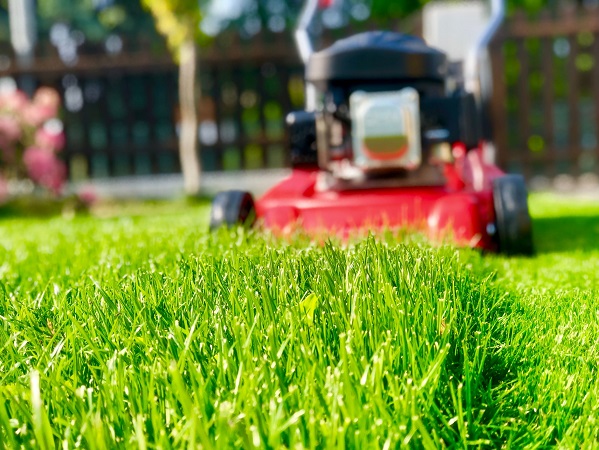
How to Improve Lawn: Solutions for a Lush and Dense Grass
Grass plays a crucial role in urban settings. It’s a familiar sight in public areas like parks, squares, and sports fields, adding a touch of natural beauty to our surroundings. Beyond that, it’s a key player in enhancing the charm of our yards and gardens. But, have you ever tried growing a nice lawn only to find it turning yellow and struggling to improve?
Achieving that lush green lawn requires more than just planting and watering. To ensure your grass improves and flourishes, you need to know about effective solutions for strengthening it. In this article, we’re diving into the essential strategies for greening, boosting density, and fortifying your grass. Join us as we uncover the secrets to a vibrant, healthy lawn. In this article, we’re diving into the essential strategies for greening, boosting density, and fortifying your grass. Join us as we uncover the secrets to a vibrant, healthy lawn.
Improve Your Lawn: Strategies for Healthier, Greener Grass
Beyond its visual appeal, natural grass serves as a vital player in air purification and oxygen production. It acts as a shield against soil erosion and contributes to cooling our surroundings. A top-notch lawn boasts a lush green hue, a soft texture, and a dense carpet-like appearance. Healthy grass resists pests, fungi, and the harsh whims of weather, standing strong against both heat and cold.
Join us on a journey to uncover the tactics employed to boost the vitality, density, and resilience of your lawn. Let’s dive into the secrets that pave the way for a truly robust and vibrant grassy landscape.
Preparing the land for Successful Grass Planting
Ensuring your soil is primed for planting is a crucial step in cultivating a thriving lawn. Optimal soil for grass growth typically consists of a blend of clay and sand. A composition of 70% clay, 15% sand, and 15% fertilizer is considered ideal for nurturing lush grass. Additionally, your chosen soil must be devoid of any pesky weed seeds.
Before sowing your grass seeds, take the time to inspect the soil using a shovel or tractor, removing any existing plants. Clear the ground of lumps, stones, and other debris to create a smooth, even surface for planting. If certain areas are lacking in soil, be sure to fill them in. Furthermore, aerate compacted soil by loosening it with a shovel, promoting better air circulation and root growth for your grass seeds. By meticulously preparing your soil, you set the stage for a successful and verdant lawn.
Improve Your Lawn with Proper Fertilization
Maintaining that lush green and vibrant look for your grass hinges on ensuring the soil is well-nourished. One key step in this process is conducting a soil test to gauge its nutrient levels accurately. This test not only reveals the soil’s pH but also identifies any deficiencies that need addressing. By understanding the soil’s composition, you can pinpoint what elements it possesses and what it lacks, laying the groundwork for effective fertilization.
In cases where the soil exhibits acidity (with a pH below 6), it is advisable to introduce lime to balance the pH levels. Conversely, when faced with alkaline soil conditions (pH exceeding 7), incorporating sulfur-based fertilizers can help restore the soil’s equilibrium. By tailoring your fertilization approach to the specific needs of your lawn, you can foster a healthy and resilient grassy expanse that radiates vibrancy throughout the seasons.

Essential Fertilizers for Robust Grass Growth
- Nitrogen Fertilizer: Vital for leaf growth and maintaining that lush green hue, nitrogen fertilizers like ammonium sulfate are excellent for promoting the strength and vitality of your grass.
- Phosphorus Fertilizer: Essential for root development, phosphorus fertilizers, such as superphosphate, are particularly beneficial during the early stages of grass growth, setting a solid foundation for a healthy lawn.
- Potassium Fertilizer: Boosting grass resilience against various stresses like drought and diseases, potassium fertilizers like potassium sulfate or potassium chloride are ideal for fortifying your grass plants.
- Micro-Fertilizers: Incorporating micronutrients such as iron, manganese, and zinc is key to sustaining the green color and overall health of your grass. These essential elements are commonly found in specialized lawn fertilizers, ensuring your grass remains vibrant and robust.
Nitrogen-rich fertilizers like ammonium sulfate are commonly employed to bolster grass density and encourage growth. Ammonium sulfate, a blend of nitrogen and sulfur, becomes the go-to choice when the soil craves nitrogen and leans towards alkalinity. Nitrogen, phosphorus, and potassium are typically required by the soil. The precise quantities needed for each of these elements are usually determined by a specialist or through a soil analysis.
In tandem with mineral fertilizers, organic alternatives play a vital role in grass cultivation. Organic fertilizers such as sheep and horse manure are favored for nurturing grass. Following seed sowing, a sprinkle of organic fertilizer over the seeds, topped with a layer of soil, is a common practice.
While neglecting fertilization can impede plant growth, excessive fertilization can also prove detrimental to plant health. The key lies in providing the plant with the right amount of fertilizer it requires. Over-fertilization can lead to yellowing of the grass and stunted growth. Striking the right balance in fertilization is essential for maintaining a healthy and thriving grassy landscape.
Choosing the Right Seeds for Your Environment
Grass seeds come in various varieties, each tailored to specific climatic conditions. It’s essential to select seeds that harmonize best with your environment. Grass types are broadly categorized into two groups: those suited for tropical regions and those ideal for colder climates. Alternatively, these categories can be referred to as grass varieties suitable for hot seasons and those thriving in colder seasons.
In tropical regions or when planting grass for spring and summer, opting for tropical grass seeds is advisable. Tropical grasses exhibit robust heat and drought resistance. Conversely, cold-season grasses excel in tolerating lower temperatures and thrive in chillier environments. By choosing seeds that align with your region’s climate, you can set the stage for a flourishing and resilient grass cover.
Enhancing Lawn Irrigation
Improperly watered grass can hinder its growth. Typically, grass seeds sprout in under 10 days post-planting. The key to successful seed growth lies in effective watering practices. Once the seeds are sown, it’s crucial to water the land consistently every day. While some regions may suffice with a single irrigation daily, others might require two or three rounds to aid seed development. The watering needs of your lawn are contingent upon various factors such as grass type, soil composition, precipitation levels, and the current season. By tailoring your watering routine to suit these variables, you can promote the healthy growth of your lawn.

For optimal results, irrigating your lawn should involve methods like sprinklers and the powder technique. Using a water hose or other intrusive methods can displace the seeds from the soil. As the grass matures, the frequency of watering can be lessened. Typically, during Fall and winter, watering the lawn once a week suffices, while in summer, it’s best to water every two to three days. The prime time for watering is early morning before the day heats up.
If the grass starts turning brown, it’s a sign that it requires more water. Conversely, an uptick in weed growth or overly soft soil may indicate overwatering. Once the newly planted grass has sufficiently grown, a uniform appearance can be achieved by mowing with a lawnmower. Adhering to these watering and maintenance practices can help improve the health and appearance of your lawn.
Improve Lawn Density and Growth through Mowing
To bolster your lawn’s density and promote robust growth, mulch it every two weeks to maintain its health. During the spring, when grass growth is at its peak, mowing should be done weekly. It’s crucial to trim the grass by less than 5 cm each time. After mowing, leave the clippings on the ground as they aid in retaining soil moisture and fortifying the soil.
Avoid mowing the grass in the same direction each time, as this can lead to uneven growth patterns. Opt for mowing when the grass is dry, as cutting wet grass can facilitate the spread of fungal diseases. By following these mowing practices, you can improve the density and overall health of your lawn.

Improve Lawn Health by Preventing Diseases and Pests
Safeguarding your lawn against diseases and pests is crucial for its well-being and density. Signs of grass issues include holes, bald patches, wilting, brown spots, and insect presence. Pests like snails, wheat bugs, caterpillars, centipedes, moles, and mice can wreak havoc on your lawn, necessitating targeted pest control measures using suitable pesticides.
Weed proliferation poses another challenge, sapping vital nutrients from the grass and impeding its growth. To combat weeds such as dandelions, uproot them entirely from the soil and prevent regrowth by employing targeted herbicides. Ensure that pesticides are applied directly to the pest to avoid harming beneficial organisms like earthworms and soil bacteria.
Bare soil patches serve as breeding grounds for weeds. If any areas lack grass cover, reseed these spots promptly to foster new grass growth and deter weed encroachment. By addressing diseases, pests, and weed growth effectively, you can bolster the resilience and vibrancy of your lawn.